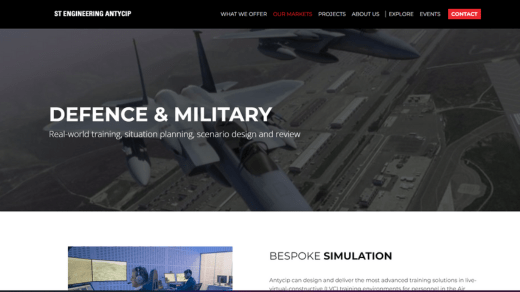
In the ever-evolving landscape of military training, Virtual Reality (VR) has emerged as a groundbreaking technology, reshaping the way armed forces prepare for diverse operational scenarios. The immersive capabilities of VR provide soldiers with realistic and risk-free training environments, offering a range of benefits from enhanced skill development to cost-effective and adaptable training solutions. This article delves into the transformative impact of Virtual Reality in military applications, exploring its multifaceted contributions to training, mission planning, and overall operational readiness.
1. **Immersive Combat Simulations:**
Virtual Reality brings a new dimension to combat training by immersing soldiers in realistic simulations. Whether it’s urban warfare, reconnaissance missions, or tactical maneuvers, VR allows military personnel to engage in lifelike scenarios that closely emulate real-world conditions. This immersive training enhances soldiers’ situational awareness, decision-making skills, and adaptability to dynamic environments.
2. **Skill Enhancement and Muscle Memory:**
The interactive nature of VR simulations facilitates hands-on training that goes beyond traditional methods. Soldiers can practice marksmanship, weapon handling, and squad coordination in a virtual setting, contributing to the development of muscle memory and honing crucial skills. The repetition and realism offered by VR training significantly enhance skill retention and proficiency.
3. **Cost-Efficiency and Resource Optimization:**
Traditional military exercises involve substantial costs related to equipment, ammunition, logistics, and personnel. Virtual Reality offers a cost-effective alternative by reducing the need for physical resources. Soldiers can undergo extensive training using VR headsets and simulated environments, minimizing expenses associated with live ammunition, travel, and equipment wear.
4. **Adaptable and Customizable Scenarios:**
VR technology provides military trainers with a versatile platform to create customizable training scenarios. Instructors can tailor simulations to specific mission objectives, adjusting variables such as terrain, weather conditions, and enemy engagement. This adaptability ensures that soldiers are exposed to a diverse range of challenges, preparing them for the uncertainties of real-world operations.
5. **Remote Collaboration and Joint Exercises:**
Virtual Reality facilitates remote training and collaboration, allowing military personnel from different locations to participate in joint exercises. This is particularly valuable for multinational forces engaged in collaborative operations. VR platforms enable soldiers to interact in a shared virtual space, fostering teamwork, coordination, and strategic planning.
6. **Medical Training and Rehabilitation:**
The application of VR extends to medical training within the military. Healthcare professionals can utilize VR simulations to practice surgeries, trauma care, and emergency procedures. Additionally, VR-based rehabilitation programs aid in the recovery process for injured soldiers, offering therapeutic exercises and activities in a controlled virtual environment.
7. **Strategic Mission Planning:**
Virtual Reality plays a pivotal role in mission planning and analysis. Military commanders can utilize VR to visualize and simulate tactical scenarios, assess potential risks, and refine strategies. The technology enables the creation of 3D models, allowing for a comprehensive understanding of the operational environment and optimizing mission plans.
8. **Reduced Environmental Impact:**
Live military exercises often have environmental repercussions in terms of resource consumption and waste generation. VR-driven training significantly reduces the ecological footprint associated with large-scale physical exercises, aligning with the broader goals of sustainability within military operations.
Conclusion: The integration of Virtual Reality in military training represents a paradigm shift, offering armed forces an innovative and efficient approach to readiness. The immersive and adaptive nature of VR simulations contributes to enhanced skill development, cost-effective training solutions, and improved operational preparedness. As technology continues to advance, the role of Virtual Reality in military applications is poised to expand, further solidifying its status as a transformative force in shaping the future of military training and operational excellence. Virtual Reality is not just a tool; it is a technological leap that propels armed forces into a new era of training and strategic readiness. ST Engineering Antycip






